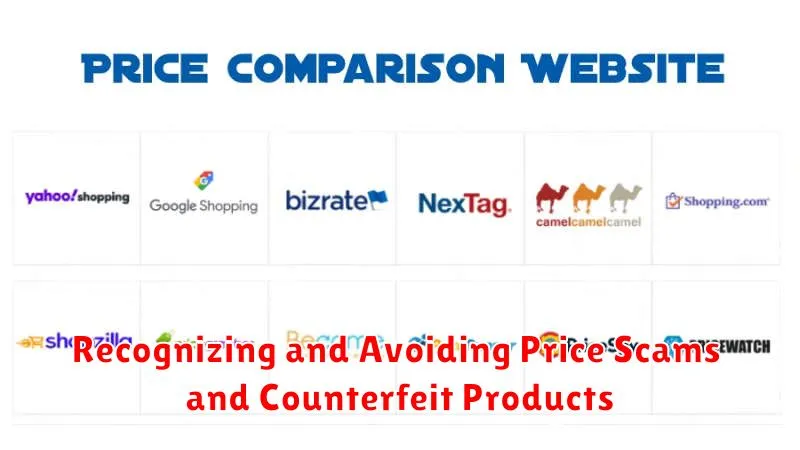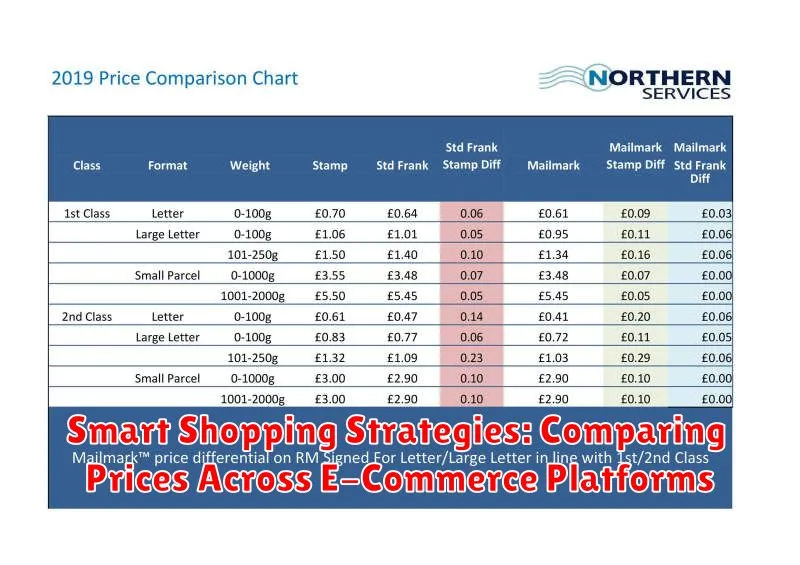In today’s dynamic digital marketplace, smart shopping is more critical than ever. Consumers are empowered with a wealth of options, and comparing prices across various e-commerce platforms is a crucial aspect of securing the best deals. This article delves into effective smart shopping strategies that will enable you to navigate the complexities of online retail and make informed purchasing decisions, ultimately saving you money and maximizing your budget. Understanding how to effectively compare prices is the cornerstone of successful online shopping.
From utilizing price comparison websites and browser extensions to leveraging sales events and discount codes, this guide will equip you with the essential tools and knowledge for smart shopping. Mastering these smart shopping strategies will transform your online shopping experience, allowing you to confidently compare prices across different e-commerce platforms and secure the most competitive offers. Whether you are searching for electronics, clothing, or everyday essentials, implementing these techniques will empower you to become a savvy online shopper.
Understanding Different Pricing Strategies Used by E-Commerce Stores
E-commerce stores employ various pricing strategies to attract customers and maximize profits. Recognizing these tactics can help you make informed purchasing decisions.
Dynamic Pricing: This strategy involves adjusting prices based on real-time factors like demand, competitor pricing, and even your browsing history. A product’s price can fluctuate throughout the day.
Cost-Plus Pricing: This is a simpler model where the seller adds a fixed markup percentage to the product’s cost to determine the selling price. This ensures a consistent profit margin.
Value-Based Pricing: Here, prices are set based on the perceived value of the product to the customer. Luxury goods or items with unique features often utilize this strategy.
Competitive Pricing: Stores using this method closely monitor their competitors’ prices and adjust their own accordingly, aiming to be the most affordable option or offer a comparable price.
Loss-Leader Pricing: This involves selling certain products at a loss to attract customers who will then purchase other, more profitable items.
Utilizing Price Comparison Websites and Tools
Price comparison websites are invaluable resources in the quest for the best deals. These platforms aggregate product listings from numerous e-commerce stores, allowing you to quickly compare prices for identical or similar items.
Simply enter the product name or relevant keywords, and the website will generate a list of retailers selling that item, ranked by price. Some popular price comparison engines offer advanced filtering options, allowing you to refine your search based on factors like shipping costs, seller ratings, and product features.
In addition to dedicated websites, various price tracking tools and browser extensions can assist in monitoring price fluctuations. These tools can alert you when the price of a product you’re interested in drops, helping you seize the best opportunity to purchase.
By strategically using these resources, shoppers can save time and money by avoiding the tedious task of manually checking prices across multiple e-commerce platforms.
Leveraging Browser Extensions for Real-Time Price Checks

Browser extensions offer a convenient way to compare prices while shopping online. These tools automatically check prices across different e-commerce platforms as you browse, saving you the hassle of manually searching on multiple sites. They can be invaluable for finding the best deals quickly and efficiently.
A variety of price comparison extensions are available for popular browsers. These extensions typically work in the background, alerting you with notifications or pop-ups if a lower price is found on another website for the product you are viewing. Some extensions also provide price history charts, allowing you to see how a product’s price has fluctuated over time. This can be helpful in determining if you’re getting a truly good deal or if it’s worthwhile to wait for a potential price drop.
When choosing a browser extension, consider factors such as reputation, features, and user reviews. Ensure the extension supports the e-commerce websites you frequently use. Be mindful of privacy policies and data collection practices, as some extensions may track your browsing activity.
Taking Advantage of Social Media and Online Forums for Deals and Discounts
Social media platforms and online forums can be valuable resources for uncovering deals and discounts. Many retailers maintain active social media presences where they announce exclusive promotions and flash sales. Following these accounts can provide early access to significant savings.
Online forums dedicated to deal hunting and coupon sharing often feature user-submitted deals, allowing shoppers to benefit from crowdsourced savings information. These communities can provide insights into price drops, limited-time offers, and retailer-specific promotions that might otherwise be missed.
Subscribing to retailer newsletters and email alerts can also deliver promotional offers directly to your inbox. Be mindful, however, of potential email overload. Consider creating a dedicated email address solely for promotional subscriptions to manage the influx of messages effectively.
Exercise caution when evaluating deals found on social media or forums. Verify the legitimacy of offers before making a purchase, and be wary of deals that seem too good to be true.
Considering Additional Costs (Shipping, Taxes, etc.)
While finding the lowest initial price is important, don’t forget to factor in additional costs that can significantly impact your final expense. Shipping fees can vary greatly depending on the retailer, shipping method, and your location. Some stores offer free shipping on orders above a certain amount, while others may charge a flat rate or calculate shipping based on weight and distance.
Sales tax is another crucial factor to consider. Rates vary by state and sometimes even locally. Be sure to check the applicable sales tax for your area before finalizing your purchase. Some online retailers may not collect sales tax if they don’t have a physical presence in your state, but you may still be responsible for paying use tax to your state directly.
Other potential costs to keep in mind include import duties if purchasing from international sellers, handling fees, and any applicable membership fees associated with particular retailers. Carefully review all costs associated with a purchase before confirming your order to avoid unexpected surprises and ensure you’re getting the true best deal.
Timing Your Purchases Strategically for Maximum Savings
Timing plays a crucial role in maximizing savings when shopping online. Understanding seasonal sales trends and promotional periods can significantly impact your budget.
Consider major shopping holidays like Black Friday, Cyber Monday, and other seasonal events. Retailers often offer deep discounts during these times to attract customers. Plan your purchases around these events to capitalize on the savings.
Additionally, be aware of flash sales and limited-time promotions. While these can offer exceptional deals, they often require quick action. Subscribing to retailer newsletters or following social media accounts can alert you to these time-sensitive opportunities.
Finally, don’t underestimate the power of off-season shopping. Demand often decreases after peak seasons, leading retailers to lower prices to clear out inventory. This can be a particularly effective strategy for items not tied to specific trends.
Recognizing and Avoiding Price Scams and Counterfeit Products

Counterfeit products and pricing scams pose significant risks to online shoppers. Learning to identify these threats is crucial for a safe and satisfying shopping experience.
Spotting Counterfeits: Look for inconsistencies in branding, packaging, and product quality. Grammatical errors in descriptions, unusually low prices, and a lack of clear contact information for the seller can all be warning signs.
Avoiding Price Scams: Be wary of deals that seem too good to be true. Double-check prices on reputable websites and compare seller ratings and reviews. Be cautious of high-pressure sales tactics and limited-time offers that create a sense of urgency.
Secure Payment Methods: Opt for secure payment gateways and avoid using direct bank transfers or unfamiliar payment methods. Credit cards often offer additional buyer protection in case of fraudulent activity.
Report Suspicious Activity: If you encounter a suspected counterfeit product or pricing scam, report it to the e-commerce platform immediately. This helps protect other consumers and ensures a safer online marketplace.

